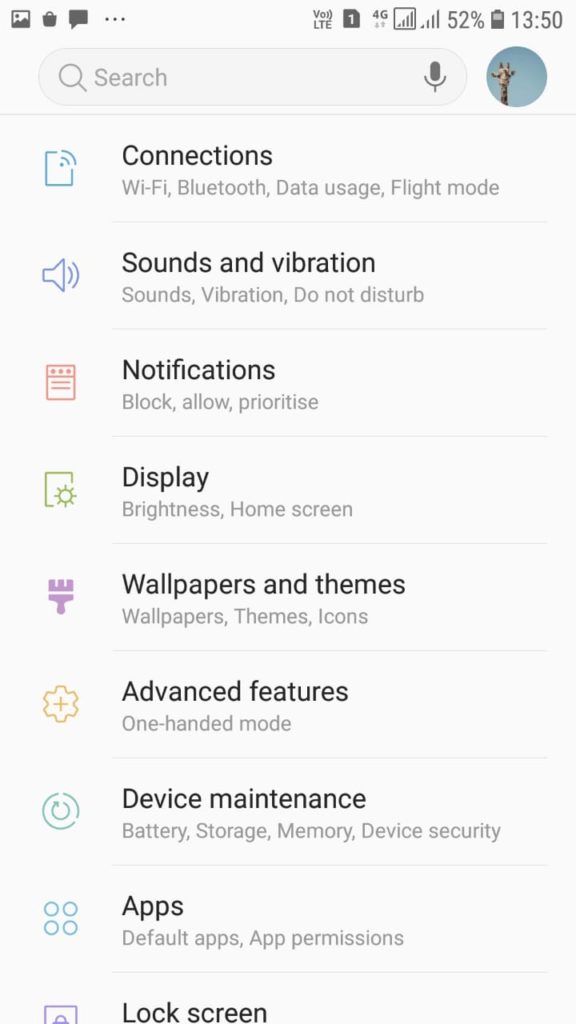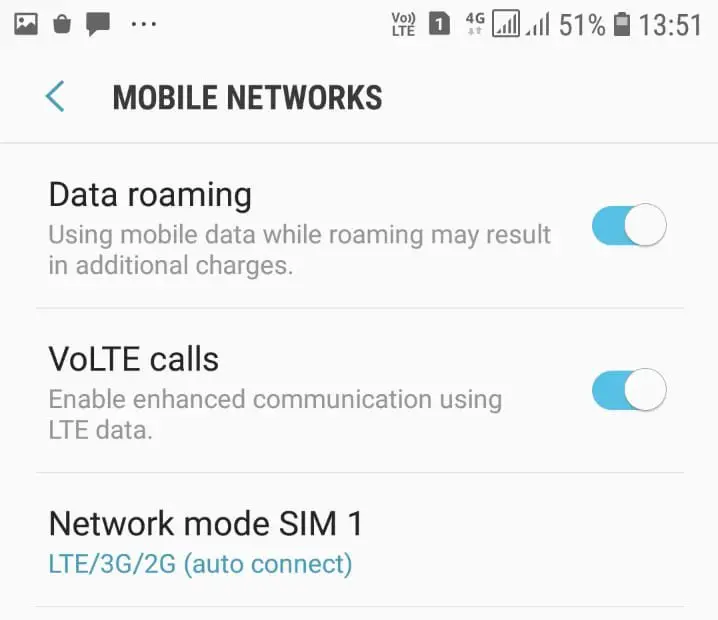What is the VoLTE icon Samsung? How can you activate it? Hello everyone, welcome back to another unique article VoLTE Icon Samsung at Gossipfunda. I’m back with another topic. Today we’ll be taking a look at the VoLTE icon that appears beside your network signal icon. You must have seen this icon if you use LTE wireless connection on your Samsung Galaxy smartphone or pretty much any general smartphone nowadays. We’ll be talking about why this icon appears and what is it used for. We’ll also be going through a tutorial on different ways to check if your phone supports VoLTE or not. So let’s begin.
Introduction
VoLTE and LTE nowadays are features that a person takes for granted to be on their smartphone. In this world of high-speed internet, most smartphones support these features. It would be very valuable to understand what these expressions mean. In this article, we will be doing exactly this. Along with that, I will also be going through tutorials on how to check if your phone supports LTE. We’ll discuss how to enable them, what are the benefits of enabling LTE and how to check your high internet speed after enabling LTE. If you encounter this article helpful, do share it with your family and colleagues, and let’s dive in deep.

Don’t Miss: com.qualcomm.atfwd
VoLTE Icon Samsung
This is the VoLTE icon Samsung devices use to show if the VoLTE is enabled is present on the status bar. When this symbol appears beside your network signal or Wi-Fi signal, this means your calls will be made over LTE. This generally increases the voice quality of calls. The VoLTE icon Samsung looks something like this:

Older Generations of Telecommunications
Before LTE there were several other generations of mobile telecommunications, namely 3G, 2G, 1G, and Mobile Radio Telephone. While 3G and 2G both being digital, 1G, and MRT were both analog forms of wireless technology.
1G or the first generation of cellular telecommunications was first introduced in the 1980s. The first 1G commercial network was launched by NTT in Japan in 1979. After around 5 years the network covered the entire population of Japan. NTT at this point became the first 1G network to be available nationwide.
2G or the second generation of cellular networks was developed and commercially launched in 1991 in Finland on the GSM standard. The NMT network in Russia remains the only functional 1G service.
The second-generation improved by a huge amount on its previous generations. 2G provided digitally encrypted phone conversations. It made efficient use of the radio frequency band, enabling more users in one frequency band. It also started to provide data services such as text messages for mobile phones. 2G using GPRS offered a maximum speed of 40kbits per second while EDGE provided a maximum speed of 384kbits per second.
The third generation was introduced commercially in mid-2001. 3G when first introduced showed capabilities of providing a transfer rate of at least 144 kbit/s. A huge thing for those days. Next iterations of 3G, commonly referred to as 3.5G and 3.75G were even better. They showed capabilities of providing transfer rates in several Mbit/s. This opened up possibilities of a large number of things on the internet such as streaming, video conferencing, and several others. These features were all very cost consuming and things that only rich people could access became a daily life habit. Even in terms of security, 3G improved upon 2G by a great margin.
LTE (Long Term Evolution)
Proposed in 2004, LTE was first released in public in December 2009 in Stockholm, Sweden as a data connection with a USB Modem. LTE specification provides a peak download rate of 300 Mbit/s and a peak upload rate of 75 Mbit/s. The Quality of Service with the LTE provided a latency as low as 5ms. LTE, since it did not meet the technical criteria of a 4G wireless service, is often called 3.95G. Other times, it has also been marketed as Advanced 4G or 4G LTE. The first commercial smartphone to adopt the LTE technology was Samsung Galaxy Indulge which was followed by HTC Thunderbolt.
LTE had many interesting features as compared to the older generations:
- Peak speeds of 300 Mbit/s (down) and 75 Mbit/s (up).
- Lower than ever data transfer latency. Under optimal conditions, it was observed to be as low as 5ms.
- LTE provided support for all frequency bands used by IMT systems under the ITU – Radiocommunication Sector.
- Spectrum flexibility was increased. Standardized cells were 1.4 MHz, 3 MHz, 5 MHz, 10 MHz, 15 MHz, and 20 MHz.
- LTE provided a more simplified architecture than the older technologies.
Voice calls on LTE after its introduction caused some problems since LTE only supported packet-switching. The voice calls with GSM, UMTS and others were all circuit-switched. To resolve this, different approaches were proposed:
- Voice over LTE (VoLTE)
- Circuit-switched fallback (CSFB)
- Simultaneous Voice and LTE (SVLTE)
- Single Radio Voice Call Continuity (SRVCC)
Out of all these, major backers of LTE from the beginning supported VoLTE because of its flexibility. Even though the industry has standardized VoLTE, LTE carries still introduced CSFB to satisfy the users for their calling needs. The network switches to 2G or 3G for the entire duration of the call with CSFB.
VoLTE (Voice over LTE)
Voice over Long Term Evolution (VoLTE) was first launched as a commercial service in 2012 in Dallas, Texas. The first VoLTE phone LG Connect 4 was also launched alongside this service. VoLTE is a wireless medium for the communication of devices. Also, VoLTE was commonly marketed and is commonly known as the HD Voice feature. VoLTE has some major improvements over its predecessors:
- The standard provides up to three times more data and voice capacity than the 3G UMTS and six times more than the 2G GSM.
- VoLTE uses less amount of data due to its usage of packet headers which are better and smaller than the unoptimized VoIP.
- Charges of VoLTE calls are approximately the same as those of previous generations.
As of 2020, more than 250 operators are investing in VoLTE. At the time of writing, almost all new smartphones have the LTE and VoLTE capabilities in them. It is safe to say that VoLTE is now the industry standard.
VoLTE uses the Adaptive Multi-Rate Wideband speech codec. While the older standards could only support frequencies up to 3.5 kHz, VoLTE or HD Voice supports frequencies up to 7 kHz. A Full HD Voice codec has also been proposed that supports frequencies up to 20 kHz.
Checking LTE or VoLTE on your phone
If you’re unsure if your phone has HD Voice or not, you can check this list.
You can also attempt switching your preferred network. If the VoLTE option appears in the list, it will be confirmed that your phone supports LTE and VoLTE. If your phone is a recent model (after 2016/2017) there is a very high chance that it does support the LTE standard.
The VoLTE Icon
The VoLTE icon is used to identify if the smartphone is using the HD Calling feature or not. The service can be enabled by using an LTE network and enabling it from the settings. The icon is present right beside your Wi-Fi signal or the cellular network signal and says “Vo LTE”. This means that now whenever you will dial or receive a call, you will be using the “HD Calling” feature. This means you will get a much better voice quality on calls than ever before.
Enabling the VoLTE service
First, make sure your smartphone does indeed support LTE and VoLTE services from one of the methods above. If it doesn’t, maybe it’s time for an upgrade. Let’s look at the steps to enable LTE and VoLTE services:
- Insert the LTE enabled sim card in the sim slot.
- Go to the Settings for your android smartphone.

- Tap on the Connections button.

- Tab on Mobile Networks.

- Tap on the appropriate sim card/slot no.
- Select LTE/3G/2G (Auto) option.

This option enables the best out of the three services available at the time.
Removing the VoLTE icon
Currently, there are no full-proof and a 100% guaranteed safe way to just disable the VoLTE icon. All of those methods require root permission and modifying system files, which could harm your Android OS. Hence I don’t recommend doing this. The only way to remove the VoLTE icon would be to disable VoLTE itself. This can be done in the same way we enabled it. Settings -> Connections -> Mobile Network. Although you will not be able to use your High-Speed internet and HD Voice Call features.
Conclusion
So, we’ve reached the end of this article. Mobile telecommunications have come a long way since the ‘70s and ‘80s. Almost every decade a new generation has been introduced improving greatly on the existing technology. Currently, even LTE has been improved upon and 5G is a widespread thing in many developed countries. With its many features, voice calls over LTE was one of the best features of LTE. It provided more flexible frequency, better voice quality, and at the same cost. Enabling VoLTE is also very simple as I’ve mentioned in the article. So if you haven’t already I do highly recommend getting a VoLTE supporting smartphone.
Hopefully, this article was helpful to you in some way or manner. I tried to cover as many topics as possible including the older generations of telecommunications, LTE, VoLTE Icon Samsung, and several others. If you own a Samsung Galaxy phone, I recommend reading these two articles:
Bixby, Samsungs DVA: com.samsung.android.app.spage
If it was helpful, then please share this article with your friends and families. Also, have a very Happy New Year.

I am a self-learned coder, and I love reading, writing, and listening all about the new and hot tech in the market. I am a big video game fanatic. From 1987’s Metal Gear to 2015’s Metal Gear Solid V I’ve played them all. I first got interested in programming when I played around with the software PC Logo (the one with the turtle). I don’t think a single day has passed since then without me learning something new in this field.



